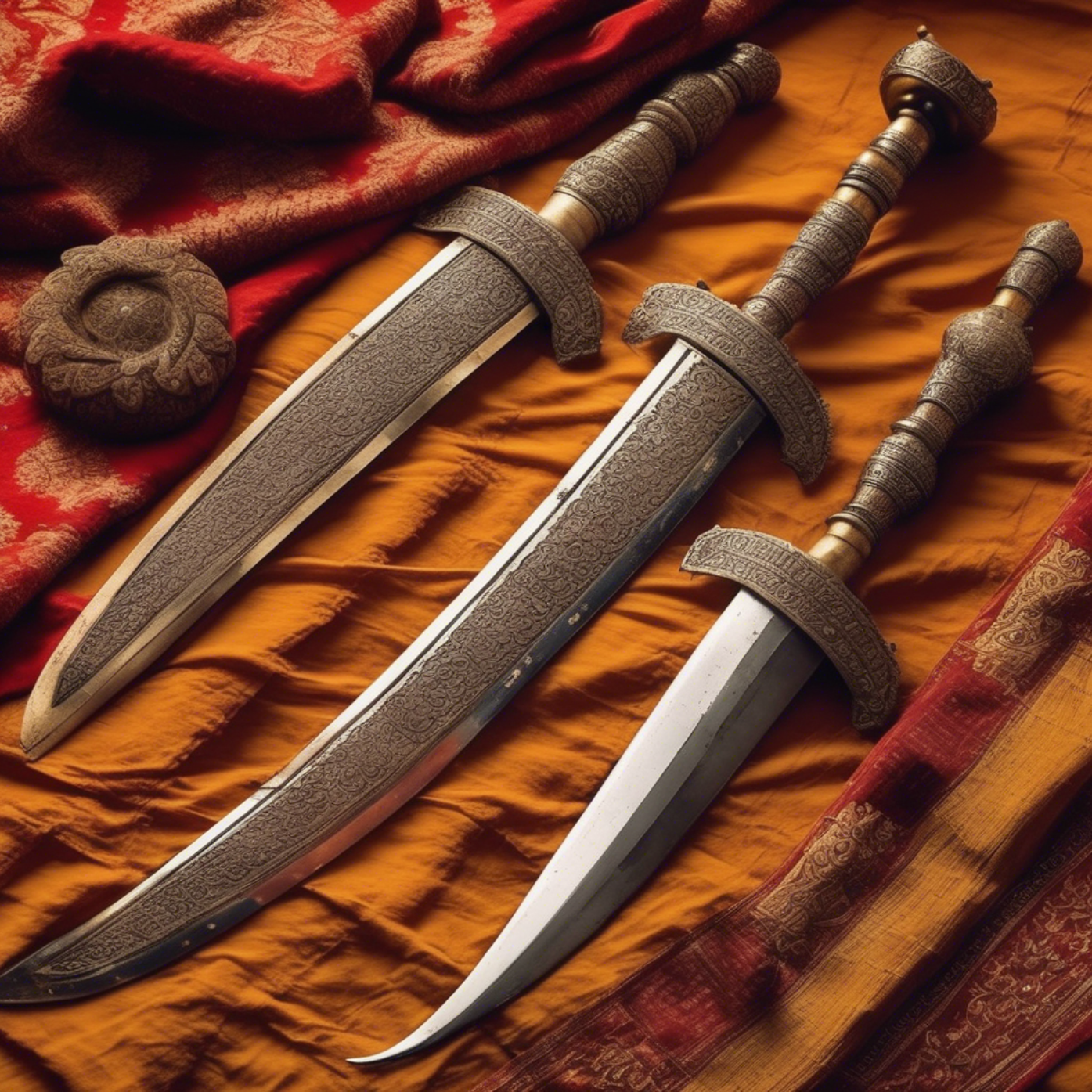
If you're drawn to the valor, elegance, and royal mystique of India’s martial past, you’re not alone. Collecting antique-style Rajput swords is a passion that blends history, heritage, and fine craftsmanship into one beautiful obsession. But here's the catch—not all swords are created equal.
Whether you're a serious collector, a history enthusiast, or someone seeking an heirloom-quality piece, there are key elements to evaluate before making that prized purchase.
Let’s explore 5 critical things to look for when buying antique-style Rajput swords—because a sword isn’t just a blade; it’s a story in steel.
1. Authenticity of Design and Historical Accuracy
The most crucial element when buying an antique-style Rajput sword is how well it reflects traditional design.
What to Check:
Blade Shape: Is the curvature consistent with historical Talwars or Khandas?
Hilt Style: Does it feature a disc pommel, knuckle guard, or lion motif—common to Rajput craftsmanship?
Cultural Symbols: Look for lotus flowers, suns, or mythological motifs like Durga, Shiva’s trident, or ancestral emblems.
A true antique-style Rajput sword isn’t just old-looking—it honors real historical patterns rooted in Rajput warrior culture.
2. Quality of Materials and Craftsmanship
Many replicas cut corners on steel quality, hilt fittings, and etching. But a premium antique-style sword will still adhere to traditional forging techniques and use durable materials.
What to Look For:
High-carbon steel or forged stainless steel for blade longevity.
Handcrafted hilts made of iron, brass, or even silver.
Traditional Koftgari work (gold/silver inlay), not just painted-on designs.
Precision in balance, weight, and blade polish.
💡 Pro Tip: A good Rajput-style sword should not feel too light or hollow. True artisans forge for both form and function—even for collectors.
3. Detailed Engravings and Etchings
The soul of any Rajput sword lies in its artistic detailing. Unlike factory-made blades, artisan swords will display scriptures, floral patterns, or protective mantras etched by hand.
What You Might Find:
Sanskrit verses like "Om Namah Shivaya" or family mottos.
Intricate borders along the blade spine.
Religious symbols on the hilt or crossguard.
These aren’t just decorative—they elevate the sword from a replica to a story-rich artifact worthy of display or inheritance.
4. Scabbard Craftsmanship and Completeness
Collectors often overlook the scabbard, but it’s an essential part of the sword’s value—especially for display purposes.
Ideal Features:
Velvet or silk wrapping, often in deep red, maroon, or gold.
Metal fittings (known as chapes and lockets) with etched designs.
A snug fit that protects the blade while showcasing its aesthetic.
A well-crafted scabbard not only enhances beauty but also preserves the sword from oxidation and wear.
5. Source Credibility and Artisan Transparency
You wouldn’t buy gold from an unknown seller—and you shouldn’t buy swords that way either. Always look into the reputation of the swordsmith or brand.
Checklist for Collectors:
Is the sword handmade or machine-cut?
Does the seller provide historical background or artisan details?
Are the swords backed by testimonials, certificates, or gallery listings?
If you’re looking for verified craftsmanship and heirloom-level Rajput swords…
👉 Explore Handmade Rajput Sword Collections Here
These swords combine antique styling with traditional techniques and collector-grade precision.
Bonus: What NOT to Buy
Avoid mass-produced swords with:
Chrome-plated blades (shiny ≠ authentic)
Plastic or hollow hilts
Generic "fantasy" designs with no cultural link
These often lack both aesthetic value and cultural integrity, reducing your collection to mere décor.
Final Thoughts: Every Blade Tells a Story
A Rajput sword isn’t just a collector’s item—it’s an echo of battles fought, vows taken, and traditions honored. When you invest in a piece, you're not just adding to your shelf—you're preserving a living legacy.
So take your time. Ask questions. Run your fingers across the etching. And when you find the right one, know that you're holding a tale crafted in steel and pride.
Because collecting Rajput swords isn’t about volume—it’s about value, virtue, and veracity.
FAQs: Buying Antique-Style Rajput Swords
Are antique-style swords functional or decorative?
Most are decorative but based on functional designs. Some are battle-ready replicas made using historical forging methods.
What is Koftgari work on a sword?
It’s a traditional inlay technique where gold or silver wire is embedded into the blade or hilt, forming patterns or inscriptions.
Can I buy a real antique Rajput sword?
Authentic antiques are rare and often very expensive. Antique-style replicas are more accessible and equally beautiful for collectors.
How do I maintain a collector’s sword?
Keep it in a dry place, clean it with a soft cloth, and oil the blade periodically to prevent rust.
What’s the average price of a high-quality replica?
Handcrafted pieces range from $150 to over $1000 depending on materials, detailing, and artisan reputation.
Write a comment ...